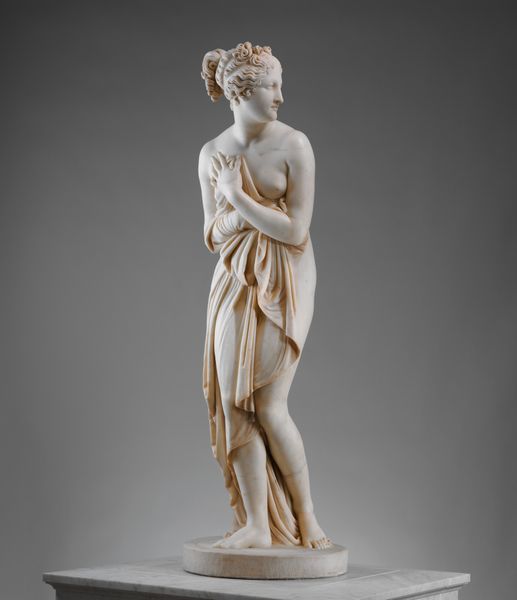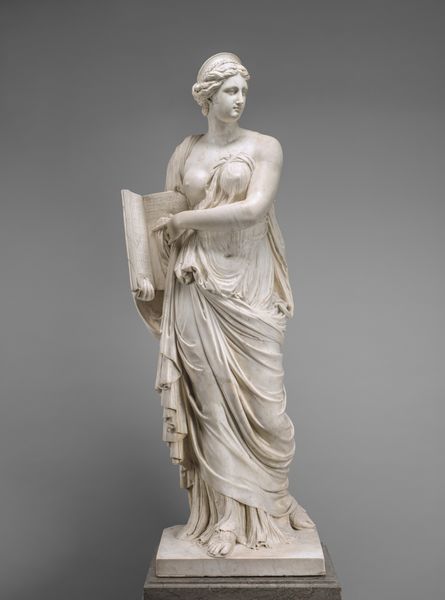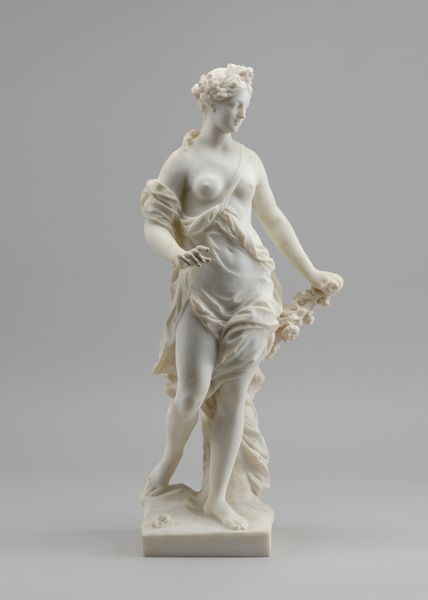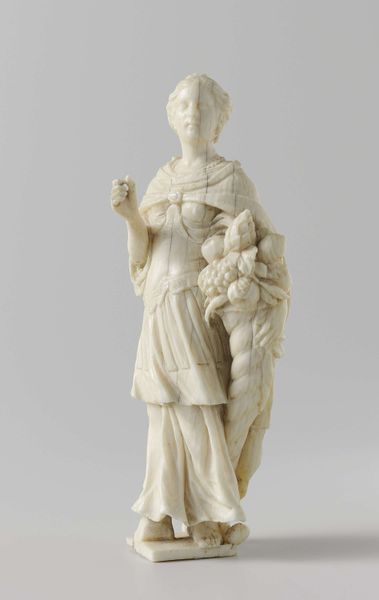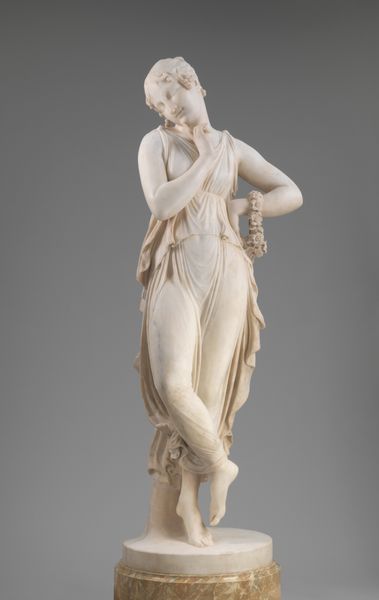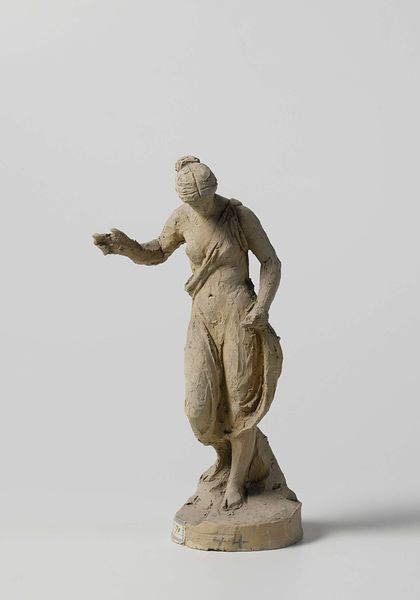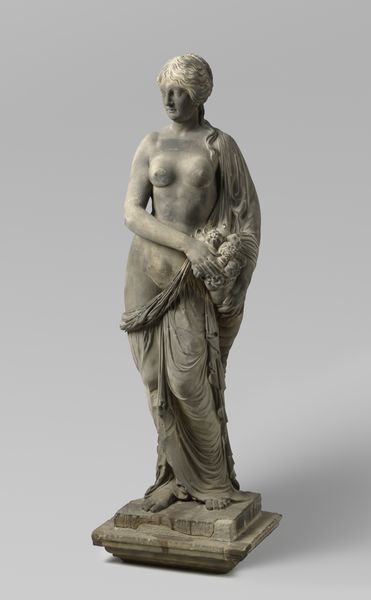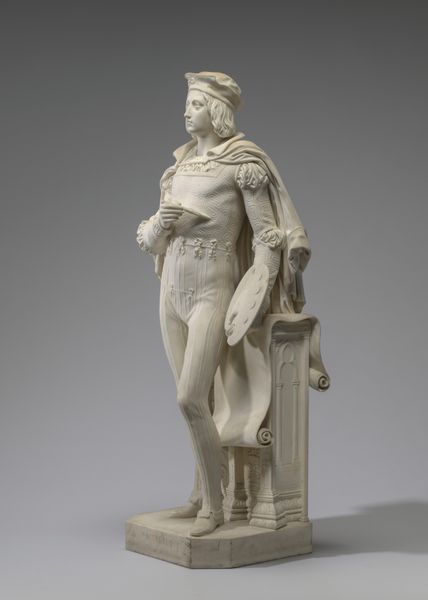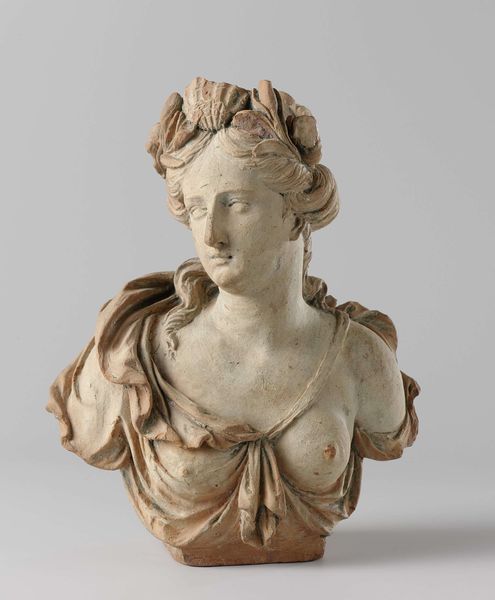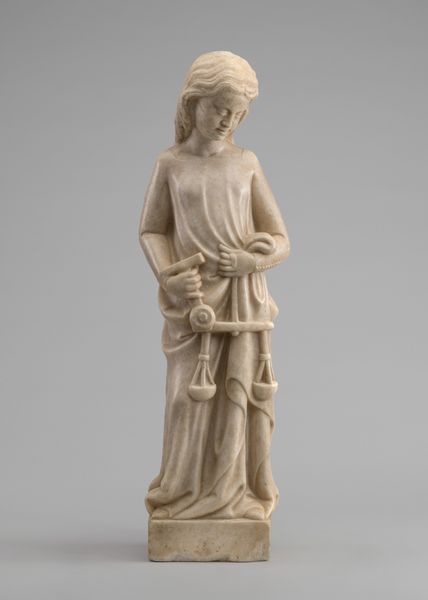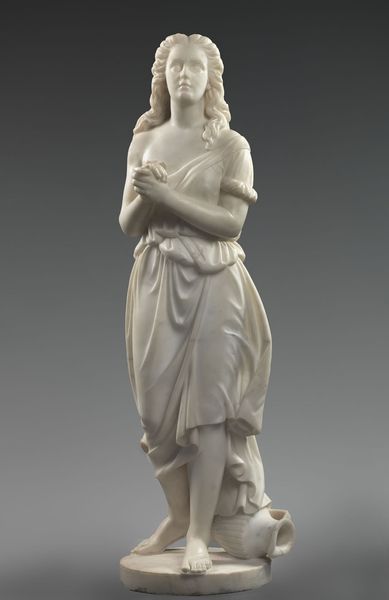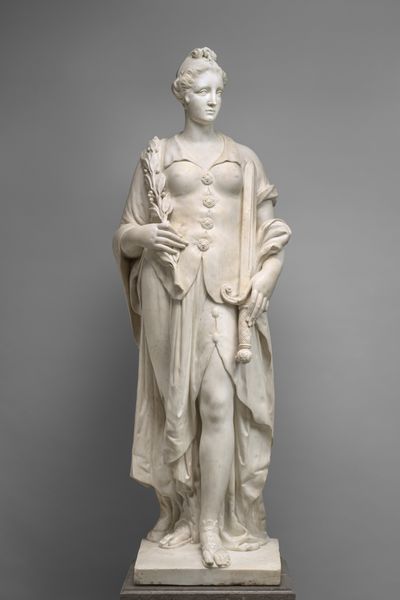
sculpture, ivory
#
portrait
#
classical-realism
#
mannerism
#
figuration
#
sculpture
#
history-painting
#
ivory
Copyright: Rijks Museum: Open Domain
Editor: This small ivory sculpture, "Diana (?)" by Jean Goujon, was created around 1550 to 1560. The drapery and contrapposto stance give the figure a beautiful sense of motion, but her missing arms are quite distracting. What do you see in this piece? Curator: Indeed. Considering Goujon's era, note how the *Diána*'s form aligns with classical ideals—observing the golden ratio can highlight how proportions, even within the fragmented state, adhere to mathematically derived harmonies favored during the Renaissance. Her missing arms? Structurally disruptive yet, paradoxically, they heighten the focus on the remaining lines and volumes. The semiotic value is in what is *not* present. Do you agree? Editor: I do. I had not considered that absence itself adds meaning. What about the texture of the ivory and the way light plays across the folds of her gown? Curator: Exactly. Consider texture as tactile value, as defined through a binary of smooth versus rough, generating contrast. Note how Goujon renders different material qualities -- skin versus fabric. Moreover, these lines lead our vision up and across the structure. Light is intrinsically structural, as shadows delineate shapes. The planes articulate the overall dynamic, from base to implied arm extension and return our eyes toward her gentle features. Editor: Fascinating. I never thought about negative space being structural as well! Thanks! Curator: My pleasure. Formal analysis unlocks layers of understanding. Focusing intently upon line, plane, shape, shadow will enable one to reveal a powerful method to reveal deeper meanings that enhance an appreciation for aesthetics, revealing its inherent artistic essence and intellectual worth.
Comments
rijksmuseum about 2 years ago
⋮
The pure classicism displayed in this ivory figurine evidences that its maker knew Antique sculpture first hand. He gave the woman – possibly Diana judging from her diadem – a classical hair and clothing style. The fluid folds of her semi-transparent gown alternate with smooth sections where her body shows through the fabric.
Join the conversation
Join millions of artists and users on Artera today and experience the ultimate creative platform.
